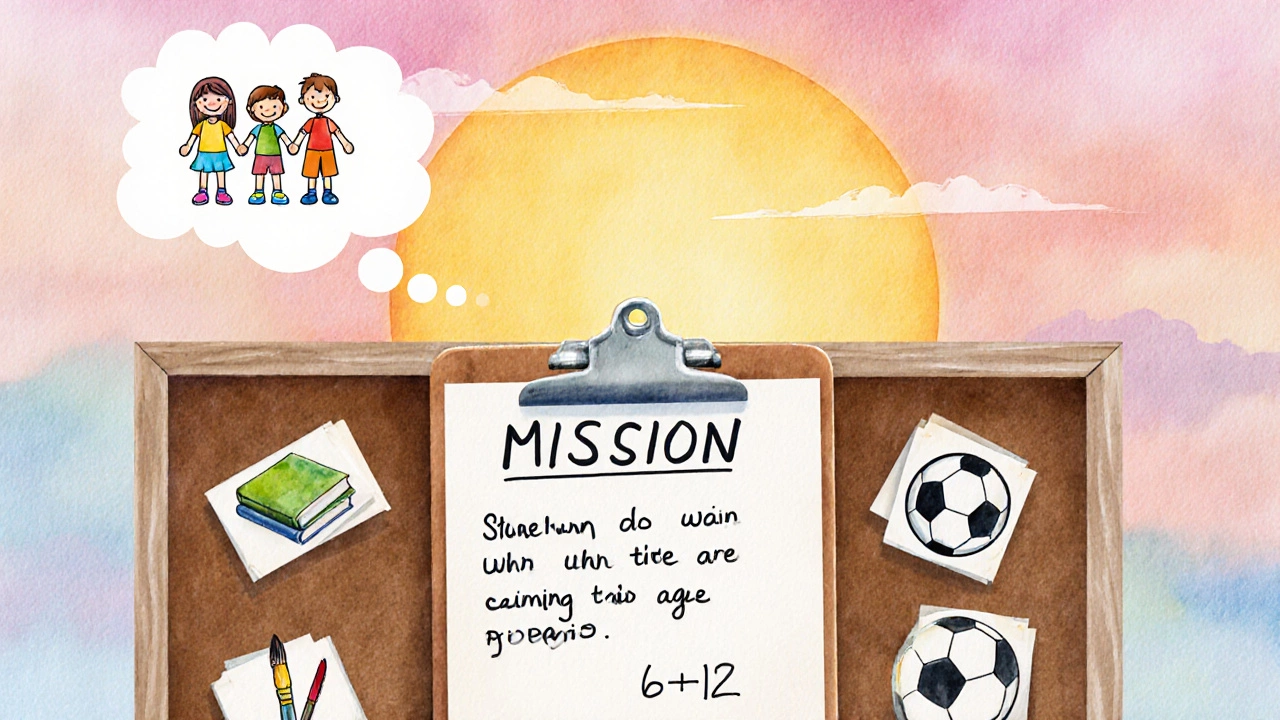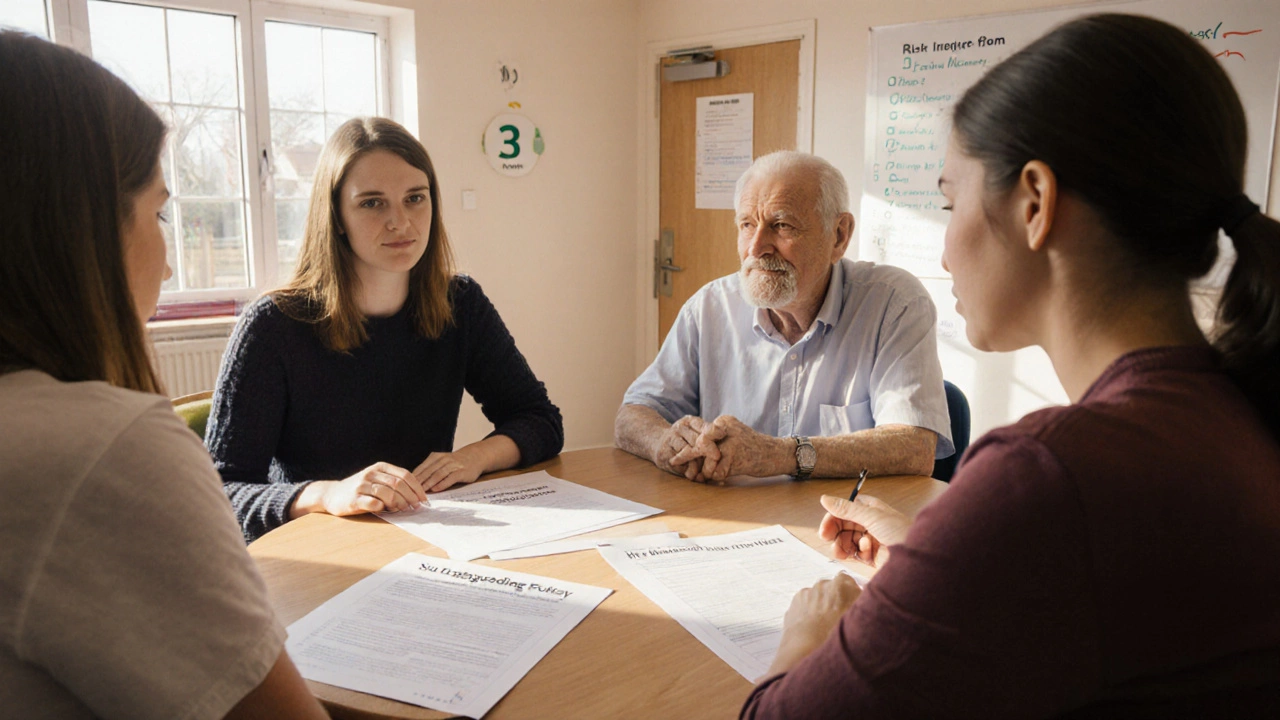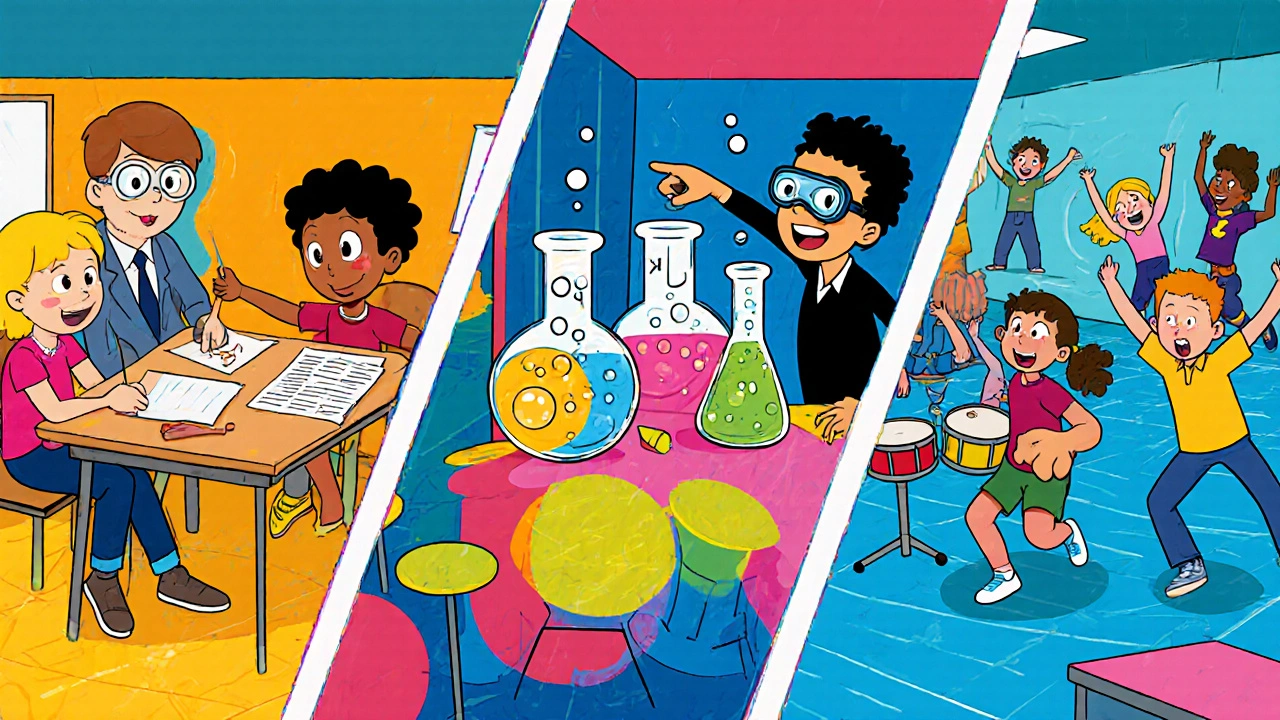Step‑by‑Step Guide to Set Up a Kids Group for After‑School Fun
 Oct, 18 2025
Oct, 18 2025
Kids Group Staffing Calculator
Calculate Your Volunteer Needs
The article emphasizes the importance of proper supervision ratios for child safety. This calculator helps you determine the minimum number of volunteers needed based on your group size.
Recommended Staffing
Safety Ratio:
Based on best practices for child safety in after-school programs.
Parents, teachers, or community members often wonder how to turn a casual gathering of kids into a thriving after‑school group. The real challenge isn’t just finding a room - it’s building a safe, engaging, and sustainable program that kids actually look forward to. Below is a hands‑on roadmap that takes you from the first spark of an idea to a fully running kids group.
Key Takeaways
- Clear purpose and age range shape every later decision.
- Legal safety checks (safeguarding policy, risk assessment) are non‑negotiable.
- Volunteer roles should match skills and availability.
- Budget planning early on prevents mid‑season scramble.
- A simple registration system keeps parents informed and consented.
1. Define the Purpose and Target Age
Start by answering two questions: what do you want the group to achieve, and which kids will you serve? Some groups focus on homework help, others on arts, sports, or life‑skills. Write a one‑sentence mission statement - it becomes the north star for volunteers, parents, and funders.
Kids Group is a community‑run after‑school gathering that provides structured activities, social interaction, and a safe environment for children aged 6‑12. By locking in the age range early you can tailor activities, choose appropriate equipment, and comply with child‑safety regulations.
2. Recruit Adult Volunteers and Define Roles
The success of any kids group hinges on reliable adults. Draft a volunteer plan that lists required roles - coordinator, activity leader, safety officer, and parent liaison. Reach out to PTA members, local retirees, and university students studying education.
When interviewing volunteers, ask about previous experience with children, any relevant first‑aid certifications, and their preferred time slots. Document each volunteer’s responsibilities in a simple role‑sheet; this prevents overlap and ensures accountability.
3. Choose a Venue and Secure Permissions
Most after‑school groups start in a community center, library meeting room, or school classroom. Schedule a site visit to check for adequate space, restroom access, and emergency exits. Write an email to the Community Center a public facility that offers rooms for local programs requesting a weekly slot, and attach a brief program outline.
Don’t forget the local authority’s permission. Many municipalities require a brief risk‑assessment form and proof of safeguarding policies before granting a licence to run a children’s activity.

4. Draft Safeguarding and Risk‑Management Policies
Legal compliance is the backbone of any kids group. Create a Safeguarding Policy a set of procedures to protect children from abuse and neglect that covers:
- Volunteer background checks (DBS or equivalent).
- Mandatory reporting procedures.
- Child‑to‑child supervision ratios (e.g., 1 adult per 8 children).
- First‑aid and emergency contact protocols.
Pair the policy with a written risk‑assessment for each activity (e.g., art supplies, sports equipment). Store both documents in a shared folder accessible to all volunteers.
5. Plan Activities and Build a Weekly Schedule
Balance structured learning with free play. A typical week might look like:
- Monday - Homework help (30 min) + Creative writing (30 min).
- Wednesday - Science experiment (45 min) + Outdoor game (15 min).
- Friday - Music and movement (45 min) + Snack social (15 min).
Use an Activity Schedule a calendar that outlines the timing and content of each session posted on the venue’s notice board and emailed to parents. Align activities with child development goals - for example, hands‑on science nurtures curiosity, while group games build teamwork.
6. Set Up Budget and Funding Sources
Even a modest kids group needs money for supplies, snacks, and occasional guest instructors. Draft a simple budget sheet that lists:
- Recurring costs: venue rent, utilities, insurance.
- Variable costs: art materials, sports equipment, snack bulk purchases.
- One‑off costs: signage, first‑aid kits.
Identify funding streams - parent contributions, a small grant from the local council’s youth‑services fund, or a fundraiser (e.g., bake sale). Record every expense in a spreadsheet; transparency builds trust with families.
7. Create a Registration Process and Consent Forms
Before the first session, collect essential information:
- Child’s full name, date of birth, allergies.
- Parent/guardian contact details.
- Emergency contact (different from parent, if possible).
Prepare a Permission Slip a signed document that gives the group authority to supervise the child and to act in emergencies that parents must sign. Include a checkbox for photo‑consent if you plan to share pictures on a community newsletter.
Offer both paper and digital options - a Google Form works well for quick data capture and auto‑export to your spreadsheet.

8. Promote the Group and Enroll Participants
Word‑of‑mouth is powerful, but a short‑term flyer campaign doesn’t hurt. Design a simple poster that highlights:
- What the group does (mission statement).
- Meeting time and place.
- How to register (website link or QR code).
- Contact person for questions.
Distribute the flyer at school drop‑offs, local library, and community bulletin boards. Post the same info in a parent‑chat app (e.g., WhatsApp, ClassDojo). Set a registration deadline two weeks before the start date to give volunteers time to prepare.
Quick Start Checklist
- Write a clear mission statement.
- Identify target age range.
- Recruit at least three committed volunteers.
- Secure a venue and obtain any required licences.
- Draft safeguarding and risk‑assessment documents.
- Develop a weekly activity schedule.
- Create a budget and explore funding options.
- Prepare registration forms and permission slips.
- Launch a simple promotion campaign.
- Hold a kick‑off meeting with volunteers and parents.
Comparison: Kids Group vs. After‑School Club vs. Youth Program
| Feature | Kids Group | After‑School Club | Youth Program |
|---|---|---|---|
| Typical Age Range | 6‑12 | 5‑13 | 12‑18 |
| Management | Volunteer‑led, community‑based | Often school‑staffed, may charge fees | Run by NGOs or local councils |
| Curriculum | Flexible, activity‑focused | Structured, may align with school subjects | Skill‑building, leadership, employability |
| Funding | Parent contributions, small grants | School budget, parent fees | Government grants, sponsorships |
| Safety Oversight | Volunteer DBS checks, safeguarding policy | School safeguarding framework | Formal risk‑management standards |
Frequently Asked Questions
Do I need a formal licence to run a kids group?
Most municipalities require a simple registration form and proof of a safeguarding policy. Check your city’s youth‑services department for the exact checklist.
How many volunteers are enough for a group of 15 children?
A common rule is one adult for every eight children, so two volunteers plus a designated safety officer works well for 15 kids.
What should be included on a permission slip?
Full child name, date of birth, medical allergies, emergency contacts, consent for photos, and a signature line for the parent or guardian.
Can I charge parents for participation?
Charging a small fee is acceptable if the venue allows it, but many community groups keep costs free and rely on donations or grants instead.
How do I handle a child’s behavioral issues?
Set clear group rules at the first meeting, use positive reinforcement, and involve parents early if problems persist. Document incidents as part of your risk‑assessment log.
